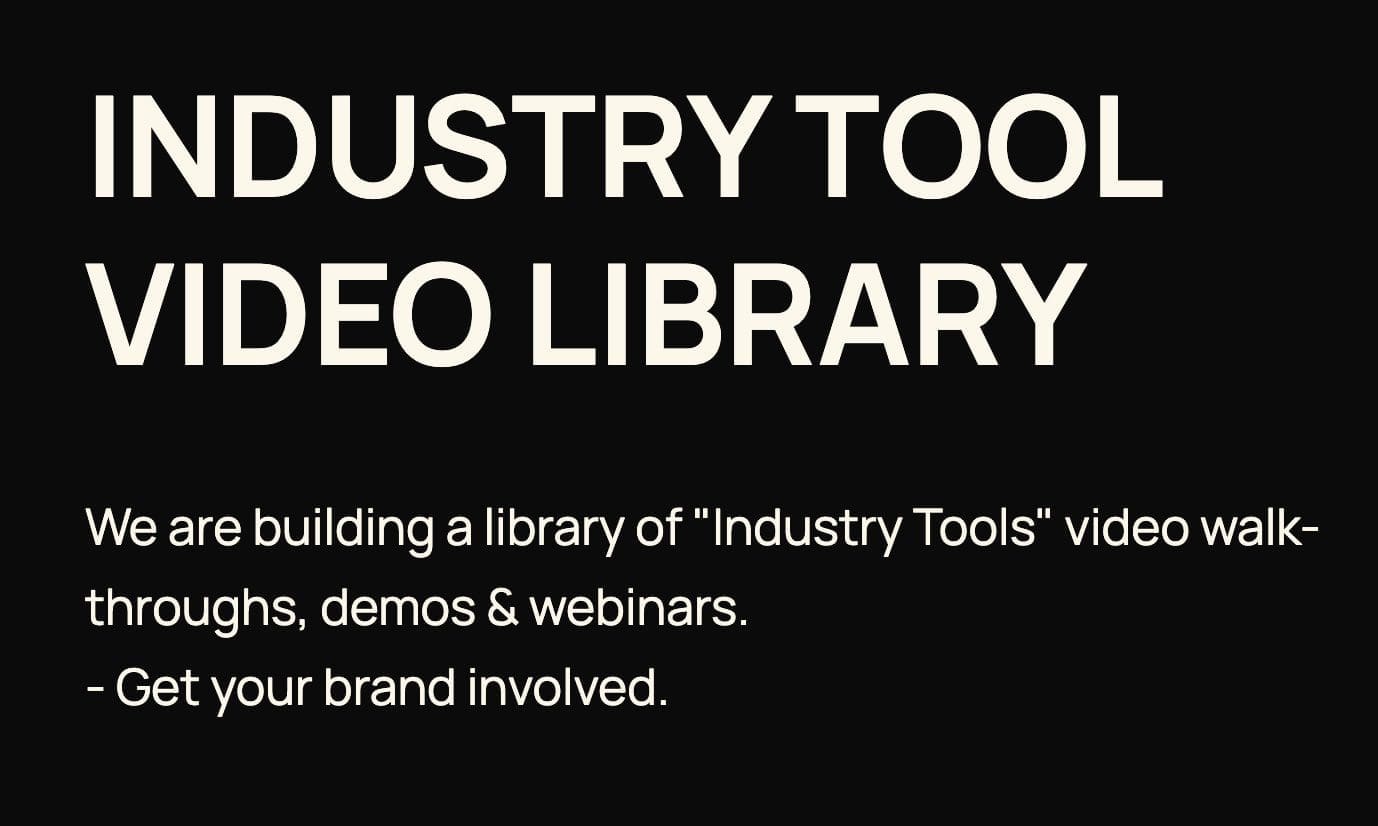AI Learning Centres:
- AI – Learn The Basics
- Get The Most From ChatGPT
- Branding in The Age of AI
- AI for Client Experience
- AI For Prospecting
- AI For Marketing
- AI For Listings & Ads
- Team Adoption of AI
- AI For PM
- AIO & Generative Search
- AI For Operations & Efficiency
- AI For Market Research & Analysis
- AI Ethics, Privacy & Compliance in Real Estate
Digital Marketing & Social Media Learning Centres:
Guides & Downloads

How to Identify Your Ideal Audience on Social Media
Finding the right people on social media is the key to winning more listings and selling more homes. When you speak to the right audience, your content feels helpful, your ads cost less, and your appointments increase.
This guide will show you how to identify your ideal audience in a clear, simple way. You will learn how to use your own data, how to build audience profiles, and how to match content to the people who are most likely to list or buy with you.
What an Ideal Audience Really Means
Your ideal audience is the group of people who are most likely to need your help soon and most likely to choose you. They live in your service area, they care about property, and they have a clear reason to act.
Think about three things.
Who they are
Where they spend time online
What problems you can solve for them
When you know these answers, you can post content that sounds like it was made for them.
Step 1: Define Your Patch and Property Focus
Start with your patch. Be very clear about the streets, suburbs, or towns you serve. Then write the property types you focus on.
Your service suburbs and nearby neighbourhoods
The price bands you usually sell in
Common property types such as units, townhouses, family homes, acreage
Any special focus such as downsizers, investors, or first home buyers
This focus will make targeting and content much simpler.
Step 2: Learn From Your Past Clients
Your own history is a goldmine. Look at who has listed with you and who has bought through you in the last twelve to twenty four months.
Answer these questions.
What life stage were they in such as first home, young family, upsizing, downsizing, investor
What were their common concerns such as time to sell, sale price, school zones, maintenance
Where did they first discover you such as Facebook, Instagram, LinkedIn, signboard, referral
Which posts or ads attracted their clicks and messages
This will show patterns. Those patterns point to your ideal audience.
Step 3: Build Three to Five Simple Audience Profiles
Create friendly profiles so you can picture the people you serve. Give each one a name and write short notes. Keep it simple and human.
Example profiles.
First Home Fiona
Age range twenty three to thirty two
Rents nearby and watches local property prices
Spends time on Instagram and TikTok
Wants clear steps, finance tips, and low stress open homes
Growing Family Grant and Mia
Two kids and a dog
Needs space, yard, and school catchments
Uses Facebook and Google to research
Wants sale timelines, upgrade plans, and budget guidance
Downsizer Denise
Long term homeowner
Wants low maintenance and strong sale price
Uses Facebook and reads community pages
Wants help with styling, trades, and moving plan
Investor Isaac
Looks at yield, vacancy, and long term growth
Uses LinkedIn and property news
Wants suburb reports and rental demand updates
These profiles guide your daily choices. Every post, story, or ad should be written to one of these people.
Step 4: Find Where Your Profiles Hang Out
Each platform has different strengths. Choose platforms based on your profiles.
Facebook
Great for community pages, local groups, and life events
Ideal for families, downsizers, and local homeowners
Instagram
Visual and fast
Ideal for first home seekers and style lovers
Use Reels, Stories, and carousels
LinkedIn
Professional audience and investors
Ideal for market commentary and longer insights
YouTube
Best for longer tours and suburb guides
Great for buyers who want deeper research
Use the platforms your profiles already use. Do not try to be everywhere at once.
Step 5: Gather Audience Clues From Places You Already Use
You can discover your audience using tools and moments you already have.
Open homes
Ask visitors what stage they are in and what matters most
Record common questions in a simple sheet
Email list
Tag people by suburb, price range, and interest
Watch which links they click
Community groups
Read the questions people ask about schools, transport, approvals, and local events
Note the topics that get the most comments
Messages and calls
Save frequent questions and turn them into posts and short videos
These clues show what your audience cares about right now.
Step 6: Match Problems to Content Pillars
Turn audience problems into helpful content. Build four to six pillars and rotate them each week.
Pillar ideas.
Selling education
Pricing, campaigns, photography, staging, timelines
Buying education
Finance basics, inspections, auctions, contract steps
Local living
Suburb spotlights, school guides, parks, cafes, transport
Market updates
Monthly stats, recent sales, days on market, buyer demand
Success stories
Case studies that show problems solved and outcomes
Behind the scenes
What you do to prepare, negotiate, and protect clients
Each post should speak to one profile and one pillar.
Step 7: Use Simple Targeting to Reach the Right People
When you boost a post or run an ad, keep targeting simple and local.
Location
Target your service suburbs and a small radius around them
Life stage signals
Use interests such as property browsing, home loans, renovations, downsizing, or moving
Choose age ranges that match your profiles
Custom audiences
Upload your past contacts with permission
Create website audiences from your own site visitors
Use lookalike audiences to find people similar to your best clients
Keep the audience size reasonable. It should be large enough to learn but small enough to stay local and relevant.
Step 8: Write Messages That Feel Personal
People stop scrolling when a post speaks to their exact worry. Use simple words and show you understand.
Tips for writing.
Start with the problem they feel
Promise a clear and small win
Show proof with a recent example
Invite a low pressure next step such as a guide or chat
Example openings.
Selling soon but not sure when to start
Need a bigger yard without leaving your favourite school zone
Want a steady rental with low vacancy risk
This style feels like a friendly neighbour who knows the area.
Step 9: Measure Signals That Prove Fit
Track simple signals that tell you the audience is right.
Saves and shares
People save guides they find useful
Comments and replies
Questions show strong interest
Clicks and form fills
People take action when the offer fits
Cost per result
Lower cost often means better audience match
Review each week. Keep what works and pause what does not.
Step 10: A One Week Action Plan
Follow these steps this week to lock in your ideal audience.
Day 1
Write your patch and property focus
List three to five audience profiles
Day 2
Review the last twenty clients and note patterns
Write the top five questions you hear
Day 3
Choose two platforms that match your profiles
Plan four posts using your pillars
Day 4
Record one short video answering a common question
Create one carousel with three simple tips
Day 5
Post your video and carousel
Boost one post in your service suburbs for seven days
Day 6
Start a poll or Q and A in a local group
Collect new questions
Day 7
Review results and note saves, comments, and clicks
Adjust your profiles and pillars based on what you learn
Repeat next week with small improvements.
Respect Privacy and Build Trust
Always respect people’s privacy. Use data that people freely share with you. Ask for permission when you add someone to a list. Be clear about what people will receive.
Trust grows when you protect private information, answer questions quickly, and keep promises. A trusted voice attracts the right audience.
Simple Prompts You Can Use to Refine Your Audience
Copy and paste these into your favourite AI tool. Fill in the blanks with your details.
Persona prompt
Create three audience profiles for my service suburbs of [suburbs]. Include life stage, goals, worries, main platforms, and topics they care about.
Content pillars prompt
Based on these profiles [paste], list six weekly content pillars with three post ideas per pillar that solve their problems.
Messaging prompt
Write five post hooks that speak to [profile name] about [topic]. Keep to one sentence each.
Offer prompt
Suggest three simple lead magnets for [profile name] who is thinking about [buying or selling]. Include a title and three dot points for each.
Refinement prompt
Here are my last five posts with results [paste]. Suggest changes to audience, hooks, and calls to action to improve fit.
These prompts help you learn faster and stay focused on the right people.
Checklist: Are You Aiming At The Right Audience
Use this quick checklist each month.
I can name my service suburbs and property focus
I have three to five audience profiles with clear notes
My content pillars match the problems my profiles have
I post on platforms where my profiles already spend time
My messages start with a clear problem and a small win
I run simple local targeting for boosts and ads
I track saves, shares, comments, clicks, and cost
I update profiles and pillars based on results
If you can tick most of these, you are speaking to the right people.
Bringing It All Together
When you know your ideal audience, everything becomes easier. Your posts feel helpful. Your ads reach the right eyes. Your calendar fills with warm conversations. Start simple. Choose your patch. Build a few friendly profiles. Speak to their biggest worries. Measure what works. Improve a little each week.
Do this and your social media will move from noise to results. You will attract people who are ready to act and who already feel they know and trust you.
Author Ken Hobson
ken@agentslibrary.com.au






